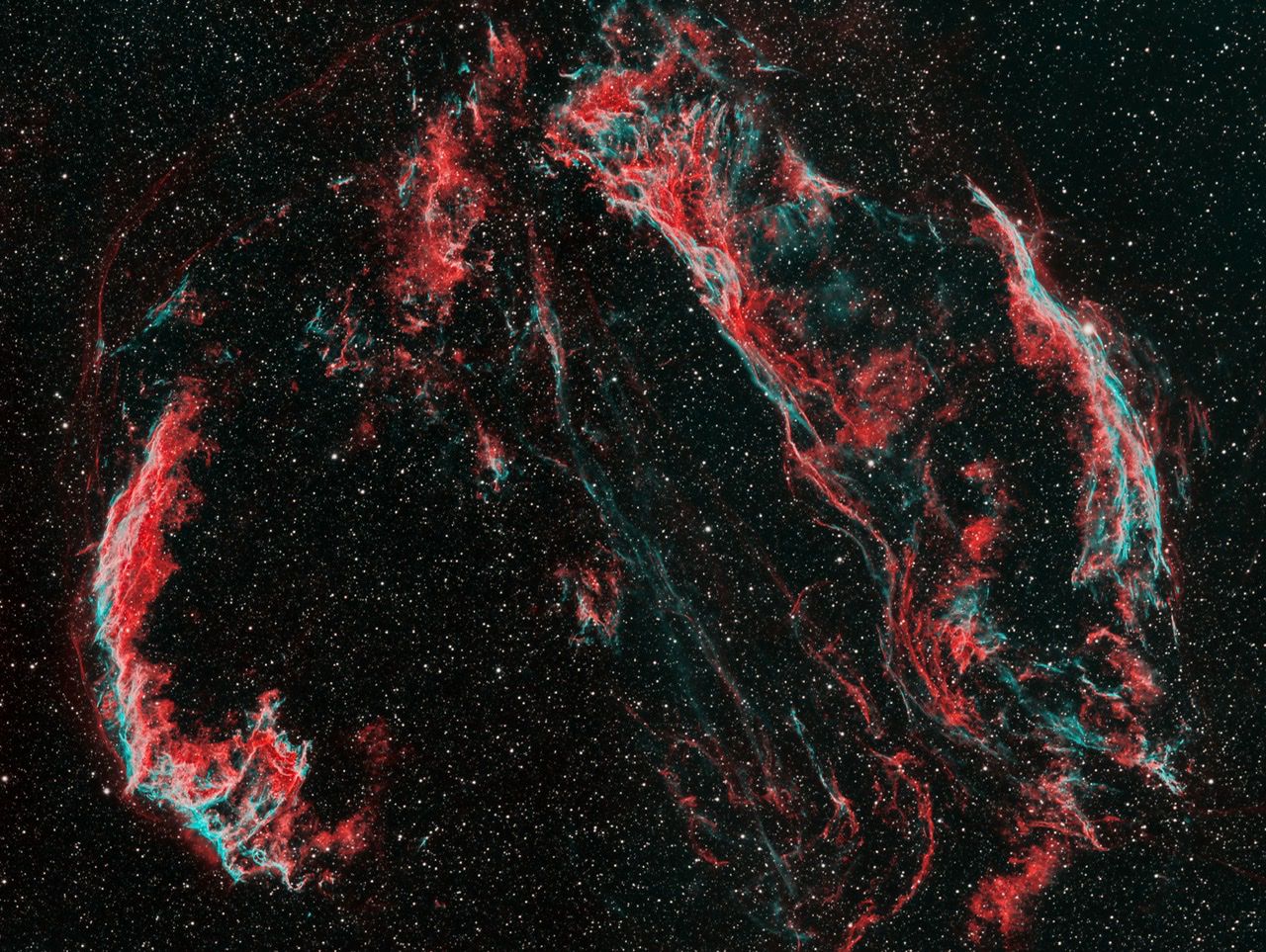Information...
This is a 2 panel mosaic of NGC6960 aka the Veil nebula, which has been rendered in the HOO palette.
The image was taken with a mono camera fitted with narrow band filters which only allow light from Hydrogen (Hα at 656.3nm) or doubly ionised Oxygen (OIII at 500.7 & 495.9nm) to pass through. In the HOO palette, the light from the Hydrogen emission line is mapped to the 'Red' channel, and the lower wavelength Oxygen to both the 'Green' and 'Blue' channels.
Compared to regular One-Shot-Colour images, the use of the narrow band filters & with a mono camera, and the choice of the HOO palette, helps to really bring out the detail in the nebula. The image is made by pointing the telescope at two adjacent regions of space which overlap by 10-15% and then combining the aligned data into a single mosaic image.
Total exposure time was approx 9 hours, with different times being used in each mosaic panel for the Hydrogen (Hα) and Oxygen (OIII). Individual filter/pane times varied between 80 mins to 2.5 hours.



